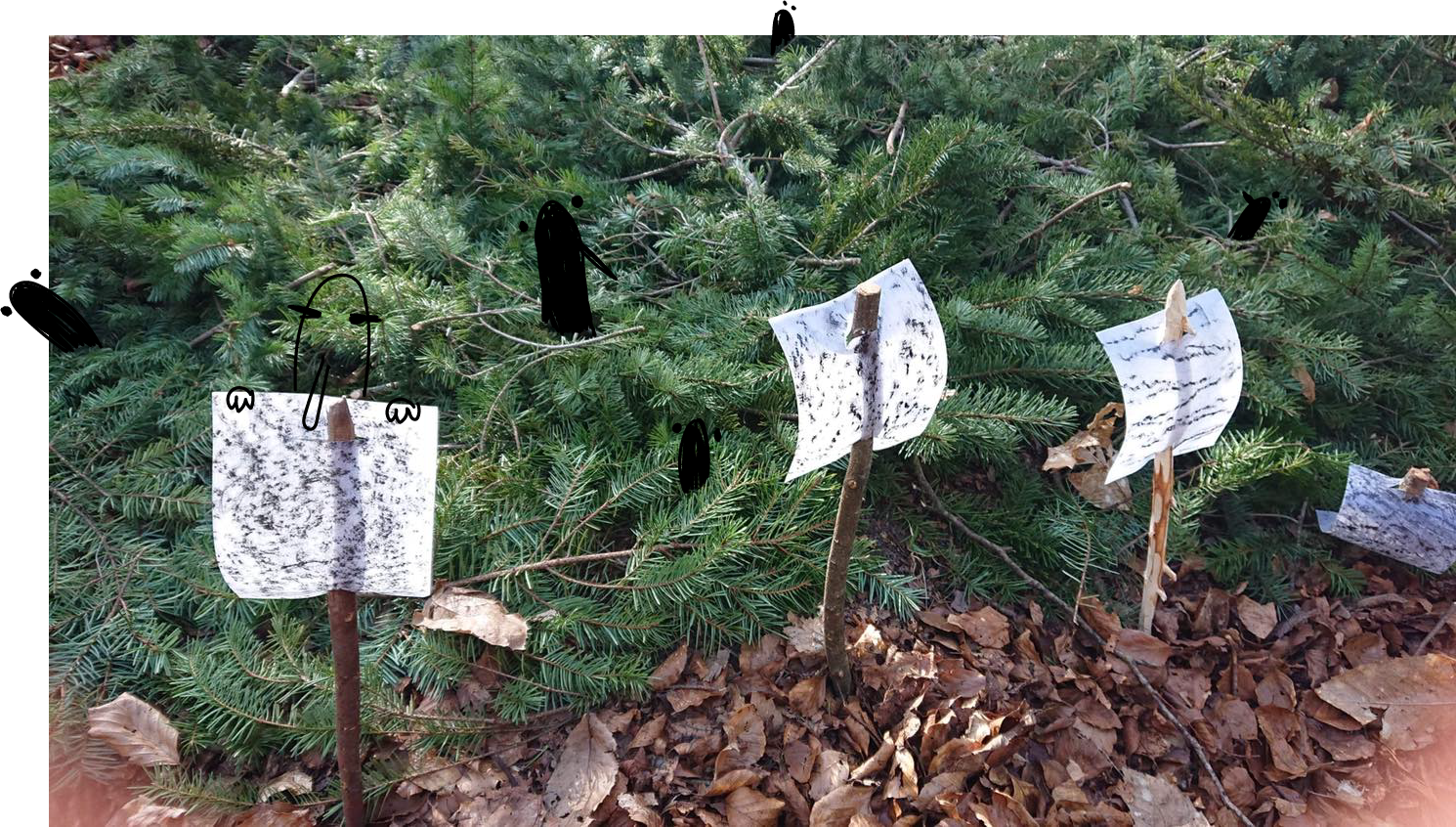WOOD WIDE WEB

Trees communicate with each other, through their roots under the ground. communication is not only via chemical processes, but also electric impulses. The speed of this is slow – 1 cm per second. What would happen if we dropped a stone and it landed on our foot? Minutes would pass before our brain would register the damage and we would cry out in pain. However, the trees receive aid from a thin fungus network – mycelium – which is intertwined with the roots. The network serves to inform and warn from tree to tree, and it happens much faster. This webbing helps the trees to establish a network throughout the forest.
The mycelium creates a sort of internet for the trees so snaps, mails and messages can be sent from one end of the forest to the other, quickly. This information is all about insects attacking, drought or other dangers. On top of that the mycelium also optimize distribution of water and nutrients.

Create a labyrinth of human bodies and let everyone pass through it ending up like a sculpture or part of the labyrinth at the end. How far can we stretch it? In which ways can we move through the labyrinth? Crawling, by stealth, like a snake?
How would it look if we had to create a network of roots? Maybe it is possible to see how roots evolve away from the trees, if we look at the trunk of the trees? We study these things and create a new network of roots around a tree. Then we transgress into a network of mycelium and send information from one tree to another (by passing a yarn ball). We seek to understand how the network would handle droughts, lack of shade/light, loneliness etc.






